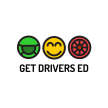Pass Your Driving Test With Get Drivers Ed Now
Are You Ready to Pass? Understanding Driving Test Marking, Faults, and Results

Passing the driving test is a pivotal moment for any aspiring driver. It marks the transition from learning to becoming a licensed driver. At Get Drivers Ed, we understand that preparing for this test involves more than just knowing how to operate a vehicle; it's about understanding the intricacies of the test itself—how it's marked, the common faults that lead to failure, and what results mean for you. This blog post will delve into these aspects to ensure you are fully prepared to pass your driving test.
The Structure of the Driving Test
Before we explore the marking criteria, it’s important to understand the structure of the driving test. Typically, it consists of two parts:
Theory Test: This includes a set of multiple-choice questions and a hazard perception test. The theory test assesses your understanding of road signs, traffic laws, and safe driving practices. It ensures that you have the necessary knowledge to make informed decisions while driving.
Practical Driving Test: This is an on-road test where you will be tested on your ability to handle the car safely and correctly in various road and traffic conditions. The practical test evaluates your real-world driving skills, including vehicle control, observation, and decision-making.
At Get Drivers Ed, our comprehensive courses cover both these aspects thoroughly to ensure you’re well-prepared. We provide extensive resources and practice materials to help you succeed in the theory test, and our practical training sessions are designed to build your confidence and competence on the road.
How Driving Tests Are Marked
The practical driving test is marked based on your ability to drive safely and independently while adhering to the rules of the road. Examiners look for a wide range of skills:
Control and Vehicle Handling: Your ability to control the vehicle smoothly, including steering, braking, and accelerating. Proper vehicle handling is crucial for safe driving, and examiners will be looking for precise control in various situations.

Observation and Awareness: Your ability to observe the road, recognize potential hazards, and respond appropriately. Good observation skills involve constant scanning of the road and surroundings, checking mirrors, and being aware of other road users.

Following Directions: Your ability to follow the directions given by the examiner accurately. This includes understanding and responding to verbal instructions, road signs, and signals.

Independent Driving: Your ability to drive without guidance, following road signs or a set route. This part of the test assesses your capability to make decisions and navigate independently.

Each of these categories has specific criteria that must be met to pass the test. At Get Drivers Ed, our instructors emphasize these skills in our training sessions, ensuring that you know exactly what examiners are looking for.
Understanding Faults
During the driving test, faults are categorized into three types:
Minor Faults: These do not directly impact safety but could lead to a more serious fault if repeated. You are allowed a certain number of minor faults; however, accumulating too many will result in failing the test. Examples include slight hesitation or minor errors in judgment.
Major Faults: These are serious faults that have potential safety implications or break traffic laws. A single major fault is enough to fail a driving test. Examples include failing to give way or making an incorrect lane change.
Dangerous Faults: These involve actual danger to you, the examiner, the public, or property. Like major faults, one dangerous fault will result in failure. Examples include running a red light or causing a near-miss accident.
In our comprehensive course at Get Drivers Ed, we use simulated test scenarios to teach students how to avoid these faults, focusing on precise and mindful driving. Our instructors provide detailed feedback on your performance, helping you to identify and correct any weaknesses.
Tips to Avoid Common Faults
To give you an edge, here are some tips to avoid common faults:
Stay Calm and Focused: Nerves can affect your driving. Practice relaxation techniques and stay focused on the task at hand. Breathing exercises, visualization, and positive thinking can help you remain calm during the test.
Regular Checks: Constantly check your mirrors and blind spots for any hazards. Good observation habits are essential for safe driving and can prevent many common faults.
Follow Instructions: Pay close attention to the test examiner’s directions and follow them carefully. Ensure you understand each instruction before proceeding and ask for clarification if needed.
Practice, Practice, Practice: Regular practice in various driving conditions is crucial. The more experience you gain, the more comfortable and confident you will become.
Are You Ready to Pass?
Being ready for the driving test means being prepared to demonstrate competent and safe driving practices consistently. At Get Drivers Ed, we ensure you are test-ready by providing detailed feedback and personalized coaching throughout your training. Our instructors work with you to address any areas of concern and build your confidence on the road.
Conclusion
Understanding the marking criteria, recognizing the faults, and knowing how to avoid them are crucial steps toward passing your driving test. With Get Drivers Ed, you’re not just learning to drive; you're preparing to pass. Our comprehensive training program equips you with the knowledge, skills, and confidence needed to succeed.
Enroll in our course today and take the first step towards driving success. Remember, preparation is the key to success, and with Get Drivers Ed, you're always ready to pass! Let us help you achieve your goal of becoming a safe, confident, and competent driver.
About the Creator
Get Drivers Ed
Discover expert tips, driving safety insights, and the latest trends from Get Drivers Ed. Your online guide to mastering the road. Learn, drive, and lead!






Comments
There are no comments for this story
Be the first to respond and start the conversation.